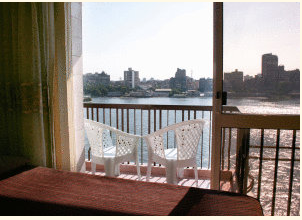Arab and Ottoman Egypt
History of Muslim Egypt and History of Ottoman Egypt
Selim I (1470–1520), Egypt conquered
The Hanging Church of Cairo, first built in the third or fourth century AD, is one of the most famous Coptic Churches in Egypt.
The Byzantines were able to regain control of the country after a brief Persian invasion early in the 7th century, until in AD 639, Egypt was absorbed into the Islamic Empire by the Muslim Arabs. When they defeated the Byzantine Armies in Egypt, the Arabs brought Sunni Islam to the country. Early in this period, Egyptians began to blend their new faith with indigenous beliefs and practices, leading to various Sufi orders that have flourished to this day. These earlier rites had survived the period of Coptic Christianity.
Muslim rulers nominated by the Islamic Caliphate remained in control of Egypt for the next six centuries, with Cairo as the seat of the Caliphate under the Fatimids. With the end of the Kurdish Ayyubid dynasty, the Mamluks, a Turco-Circassian military caste, took control about AD 1250. By the late 13th century, Egypt linked the Red Sea, India, Malaya, and East Indies. They continued to govern the country until the conquest of Egypt by the Ottoman Turks in 1517, after which it became a province of the Ottoman Empire. The mid-14th-century Black Death killed about 40% of the country's population.
After the 15th century, the Ottoman invasion pushed the Egyptian system into decline. The defensive militarization damaged its civil society and economic institutions.The weakening of the economic system combined with the effects of plague left Egypt vulnerable to foreign invasion. Portuguese traders took over their trade Egypt suffered six famines between 1687 and 1731. The 1784 famine cost it roughly one-sixth of its population.
Muhammad Ali dynasty
History of Egypt under the Muhammad Ali dynasty
French Campaign in Egypt and Syria, Ottoman–Saudi War, Muhammad Ali's seizure of power, First Turko-Egyptian War, Second Turko-Egyptian War, and Khedivate of Egypt
British admiral Codrington negotiating with Muhammad Ali Pasha in the latter's palace in Alexandria.
Mosque of Muhammad Ali
The brief French invasion of Egypt led by Napoleon Bonaparte began in 1798. The expulsion of the French in 1801 by Ottoman, Mamluk, and British forces was followed by four years of anarchy in which Ottomans, Mamluks, and Albanians who were nominally in the service of the Ottomans, wrestled for power. Out of this chaos, the commander of the Albanian regiment, Muhammad Ali (Kavalali Mehmed Ali Pasha) emerged as a dominant figure and in 1805 was acknowledged by the Sultan in Istanbul as his viceroy in Egypt; the title implied subordination to the Sultan but this was in fact a polite fiction: Ottoman power in Egypt was finished and Muhammad Ali, an ambitious and able leader, established a dynasty that was to rule Egypt until the revolution of 1952. In later years, the dynasty became a British puppet.
His primary focus was military: he annexed Northern Sudan (1820–1824), Syria (1833), and parts of Arabia and Anatolia; but in 1841 the European powers, fearful lest he topple the Ottoman Empire itself, forced him to return most of his conquests to the Ottomans, but he kept the Sudan and his title to Egypt was made hereditary. A more lasting result of his military ambition is that it required him to modernize the country. Eager to adopt the military (and therefore industrial) techniques of the great powers, he sent students to the West and invited training missions to Egypt. He built industries, a system of canals for irrigation and transport, and reformed the civil service.
The introduction in 1820 of long-staple cotton, the Egyptian variety of which became notable, transformed its agriculture into a cash-crop monoculture before the end of the century. The social effects of this were enormous: land ownership became concentrated and many foreigners arrived, shifting production towards international markets.
Muhammad Ali was succeeded briefly by his son Ibrahim (in September 1848), then by a grandson Abbas I (in November 1848), then by Said (in 1854), and Isma'il (in 1863). Abbas I was cautious. Said and Ismail were ambitious developers, but they spent beyond their means. The Suez Canal, built in partnership with the French, was completed in 1869. The cost of this and other projects had two effects: it led to enormous debt to European banks, and caused popular discontent because of the onerous taxation it required. In 1875 Ismail was forced to sell Egypt's share in the canal to the British Government. Within three years this led to the imposition of British and French controllers who sat in the Egyptian cabinet, and, "with the financial power of the bondholders behind them, were the real power in the Government.



















































